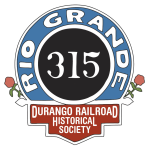
SN TRACK RECONSTRUCTION AND ENGINE HOUSE RESTORATION
In February 2009 the State Historical Fund of the Colorado Historical Society awarded DRHS a major grant for this project. Gates Foundation, Narrow Gauge Preservation Foundation, El Pomar Foundation, and several individuals provided other funds. The total project budget is about $240,000 in cash. The Galloping Goose Historical Society of Dolores (GGHS) supplying most of the rail and ties on permanent loan.
The complex nature of the partners required four new formal agreements between: (1) DRHS and SJCHS, (2) GGHS and SJCHS, (3) Town of Silverton and SJCHS, and (4) D&S, DRHS and SJCHS, as well as the two existing agreements between the City of Durango and DRHS concerning the 315.
Because the track ran along a public street, we applied to the Colorado Public Utilities Commission for approval, which was granted in May 2009, on the conditions that the track would be at the side of the street, not cross any street or railroad, and would not be used for public conveyance but only as a private yard.
The project was organized as tasks for surveying, roadbed construction, subballast, track construction, ballast, water main and hydrant, engine house doors and doorways, engine house pits, electrical service upgrade, and interpretative signs.
SJCHS volunteers cleaned out historical artifacts that had been stored in the engine house. Volunteers from DRHS and SJCHS then cut through the flooring to examine the engine pit, but most of the pit work was contracted out. Skanska USA of Cortez, Colorado, volunteered to haul the rails and ties loaned by GGHS from Dolores to Silverton. Joe Sebestyen of Durango and his group of investors allowed us to use their vacant property next to the SN track for layout. Volunteers cut about 700 standard gauge ties to narrow gauge length and sealed the ends. Volunteers built the dock at the end of the track and the panels of floorboards for the engine pit. Otherwise practically all the other construction work was contracted out. Pete Maisel of Silverton donated services in organizing track crews of D&S employees on their time off.
Southwest Land Surveying of Delta, Colorado, performed surveying. Klinke and Lew of Silverton restored the doorways and pits, with excavation by Necchi Construction of Durango. Fullmer Construction of Silverton put in the water main and hydrant. Necchi Construction built the roadbed, laid drainage culverts, and, along with Lew, laid some of the track. D&S track crews built the majority of the track, including all the turnouts. Peak Construction of Silverton used its heavy-duty forklift to offload rails, rail parts, and ties.
SN Track & Engine House Photo Gallery
Photos by George Niederauer unless credited otherwise.
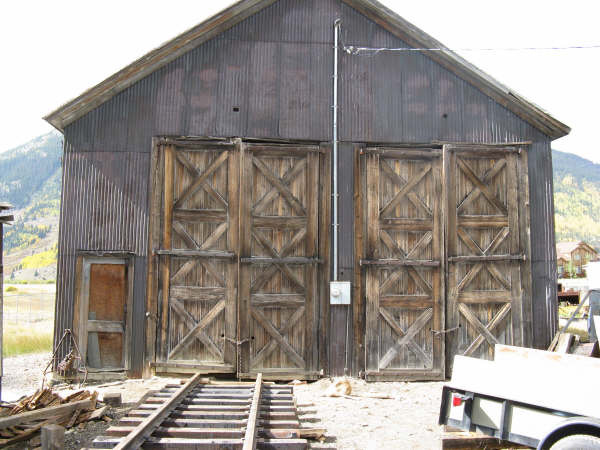
June 2009. SN engine house doors before restoration. The track section was a temporary ramp to enable moving the 315 from a trailer to temporary track in the engine house for winter storage. Below, typical condition of a door and threshold before restoration.
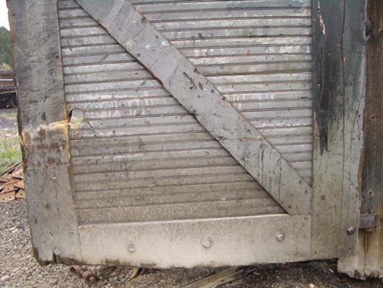
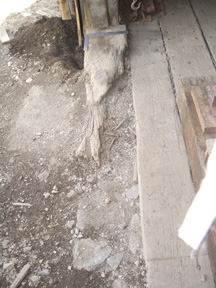
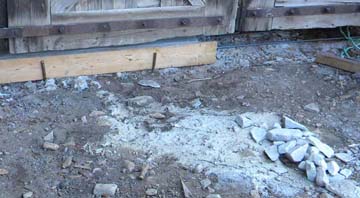
Rocks in the crumbled foundation were mortared back into place.
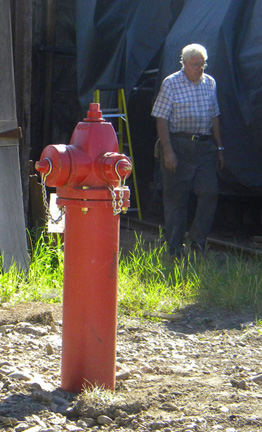
July 16, 2009. In the background Tom Artzberger is part of the crew bringing the 315 out of the engine house for its move to Chama. The fire hydrant was the first task completed for this project. It is located just to the north of the shed shown in the larger view of the engine house below. Purpose of the hydrant was two-fold: fire fighting and water for the 315.
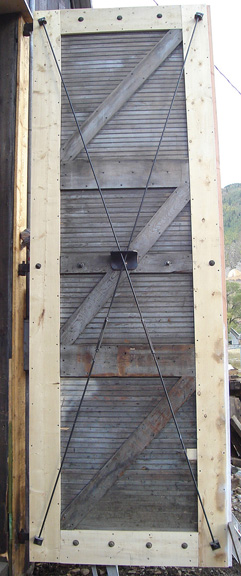
September 2009. New braces were added to pull the bow in the doors flat and to provide a means of adjustment to keep them square. The curve of the door edge is an optical effect. Fritz Klinke
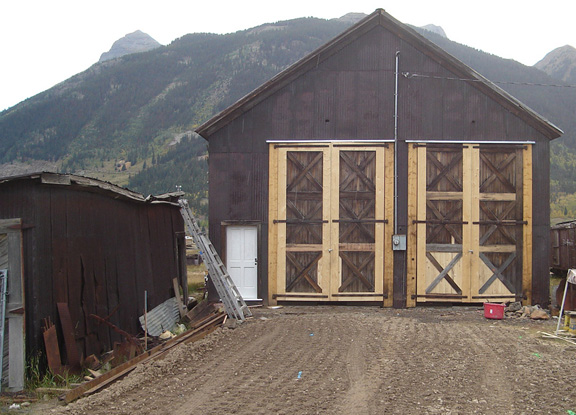
September 11, 2009. The engine doors had been restored in place, the man door was replaced, and the roadbed for the track had been laid down. Fritz Klinke
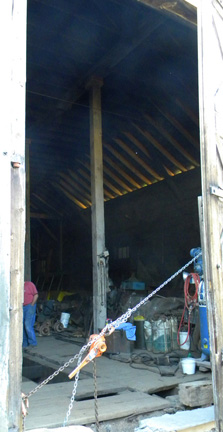
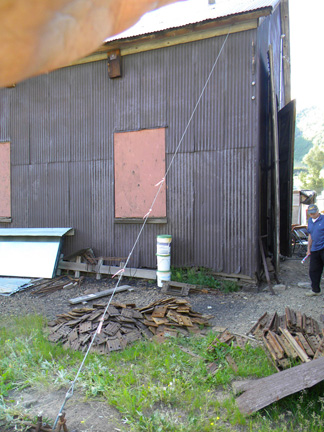
July 18, 2009. The front wall leaned slightly to the right, so Loren Lew pulled it back left and cabled it to the ground, a temporary measure until the building is restored.
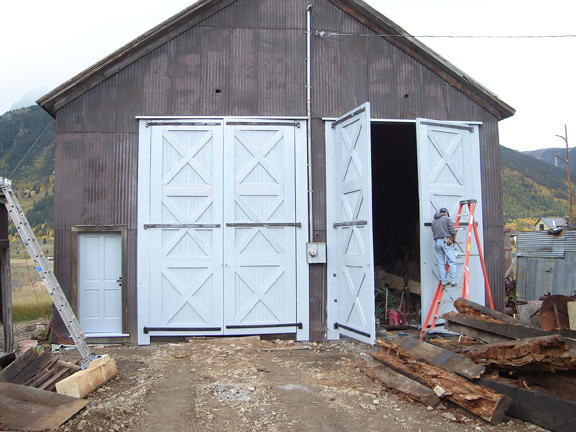
By September 19, 2009, the doors had been painted the same gray that was discovered as the bottom layer of paint. Loren Lew was painting the metal parts black. Note the pile of rotted beams that were pulled out of the left pit. Fritz Klinke
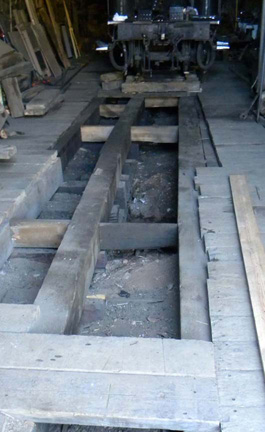
July 16, 2009. The 315 had been stored the past winter on temporary track laid on top of the floor in the left stall. After pulling the engine out and removing the track (the tender is still at the back), we removed the floor to begin excavating the pit. We discovered that the right side was a stack of three rows of longitudinal beams, about 12 x12-in, and the left side was a stack of two rows of longitudinal beams separated by short lateral beams. Dirt and debris covered the bottom two layers.
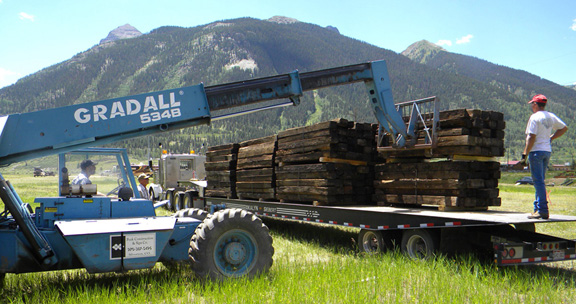
July 16, 2009. Cliff Pohlman and his Big Blue unload ties from one of the two truckloads of ties hauled gratis by Skanska USA of Cortez, CO, from Dolores to Silverton. The ties are on permanent loan from the Galloping Goose Historical Society of Dolores.
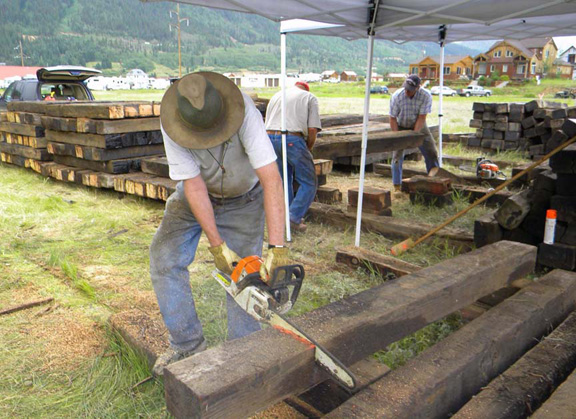
August 8, 2009. Once the 800 ties were transported from Dolores, we went to work cutting them down to narrow gauge size (6.5-ft per an old D&RGW standard plan, although D&S uses 6-ft ties). Duane Danielson is cutting a tie, while Jerry Hoffer and Ron Atkinson carry a standard gauge tie to the cutting area.
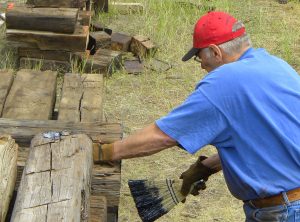
Late August 2009. Jerry Hoffer is painting the cut ends with an asphalt-based coating, such as used on basement exterior walls.
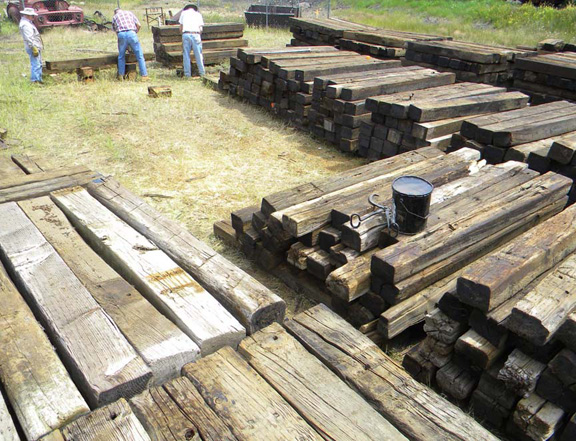
Late September 2009. The last few ties are cut. Will Foreman, Ron Atkinson, and Duane Danielson. About 10% of the ties were culled as too rotted to be structurally useful.
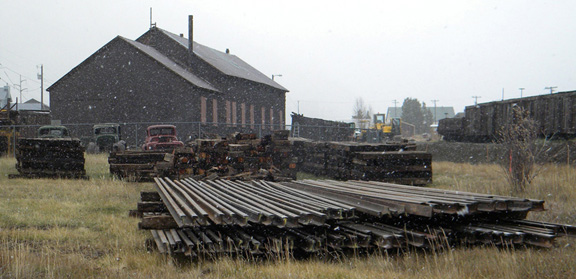
October 6, 2009. The rails from the Galloping Goose Historical Society of Dolores were delivered to Durango, and stored in the field just south of the SN engine house, courtesy of Joe Sebestyen, one of the owners of the field. Through the efforts of Gary Merrifield of Skanska USA in Cortez, CO, they transported the ties and track from Dolores to Durango gratis. Part of our railroad grade is shown at right, next to the cars on the D&S Shenandoah Loop.
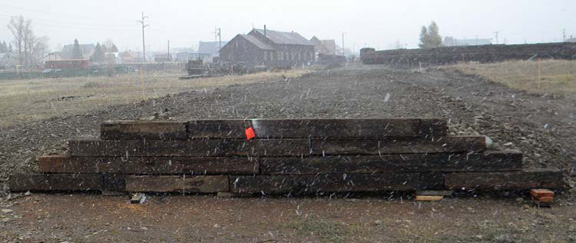
The dock at the end of the SN roadbed, photographed on October 6 as the first snow of the season fell on Silverton. We had built it on September 30.
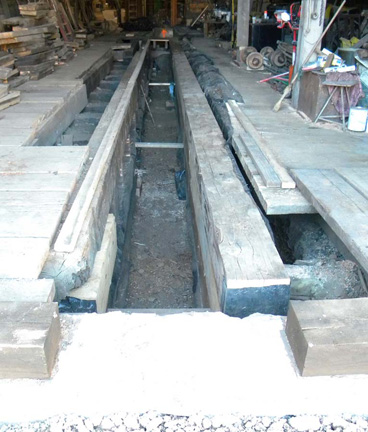
October 25, 2009. The side beams in the left pit are restored. The top layer of beams are original and other longitudinal beams were replaced with decades old reclaimed industrial beams. A plastic sheet protects the outside of the beams from combined dirt and moisture.
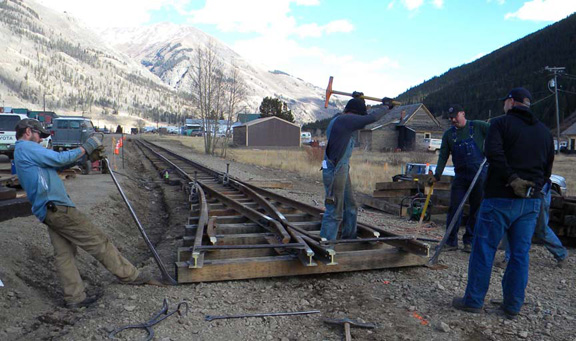
November 11, 2009. A D&S track crew lays the first block of track and first turnout (#6) at the corner of 9th and Cement Streets. A corner of the D&S depot is barely visible at far right on 10th Street.
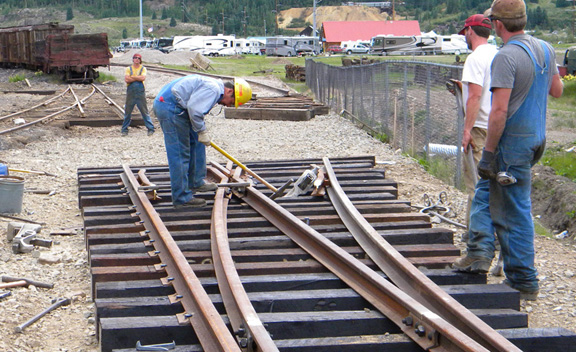
August 7, 2010. A D&S crew assembles the second turnout (#6) on Cement Street and aligns it with the #10 turnout on the Shenandoah Loop. Installing the #10 was a major job, entailing tearing up the track, removing old ties, and raising the roadbed to level it out before installing the switch. Earlier in the summer, Tom Necchi and Loren Lew added track to the south end of Cement Street from the dock at 7th Street and placed ballast on it.
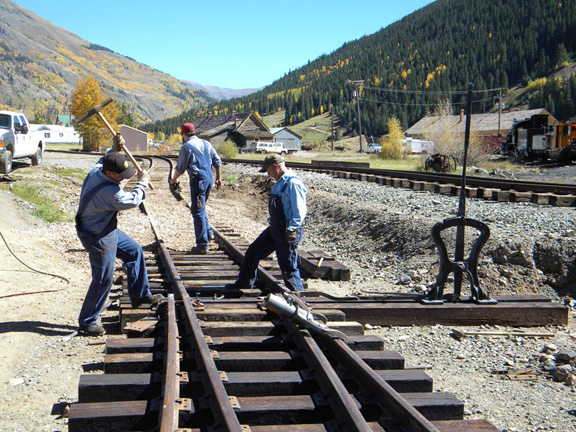
September 25, 2010. A D&S track crew installs the harp stand for what is probably the first stub switch constructed in decades. This harp stand belongs to the San Juan County Historical Society and had been on display in the old jail house museum. The casting has raised letters for “D&RGW” and was once at Elk Park on the Silverton Branch.
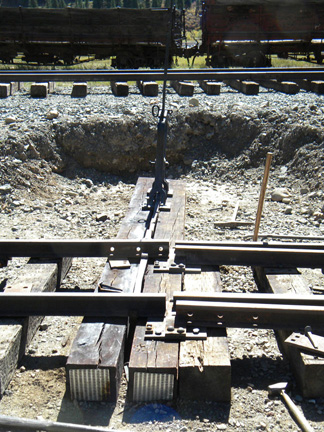
September 25, 2010. The special rail plates were copied from those on the stub switch on the D&S Rockwood wye.
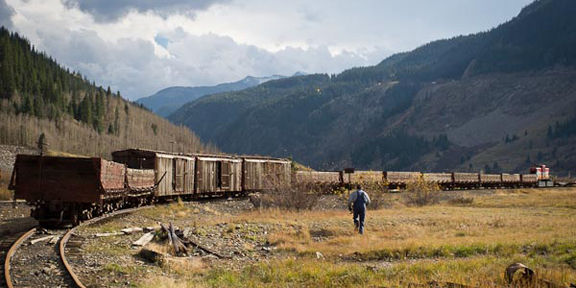
October 6, 2010. D&S cars are removed from the southern half of the Shenandoah Loop, where they had resided for decades, to clear the track to move Casey Jones and the 315. Darel Crawford
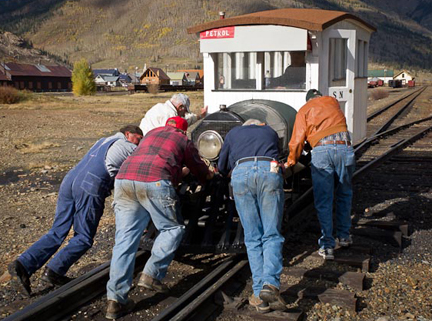
October 6, 2010. Unfortunately Casey Jones was not in running condition, so a team pushed it all the way from behind the depot (in far right background down past the switch, then onto the siding to allow the diesel to get by to do some switching. Then they would push it further south and back up on the Shenandoah Loop onto the SN track and, finally, into the engine house (in far left background). The Casey Jones was put into the engine house first, on temporary rails made from 2x4s behind the rails on which the 315 would be stored. Counterclockwise from white jacket: Fritz Klinke, Steve Otten, Jerry Hoffer, Duane Danielson. Darel Crawford
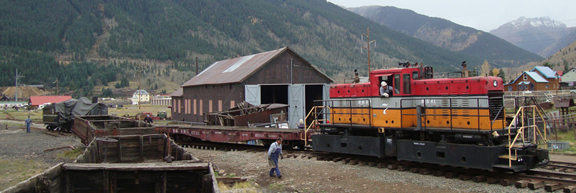
October 6, 2010. After some switching to turn the 315 around to face northward, Big Al becomes the first piece of powered rail equipment to move from the Shenandoah Loop onto the reconstructed SN track. Evan Buchanan is the engineer. Steve Otten keeps an eye on Big Al’s movement along the track, and Dennis D’Alessandro does the same for the 315. David Hibl
October 6, 2010. Pushed into the engine house and uncovered, the 315 is ready to rest through the long winter. Dennis D’Alessandro
October 30, 2010. Status of SN track project
All track was laid except for the back part of the right pit, which was completed a week later. The track crew was going back over the track to tune it up, adjusting level and alignment and adding ballast as needed. The photos begin at the north end of the track and work southward.
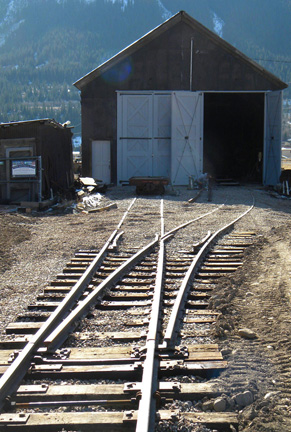
The stub switch is now complete as is the track to both doorways. This area in front of the engine house will be used frequently by vehicular traffic, so as in typical rail yard, ballast is being placed to the level of track for driving over it. Dirt work on the vehicle approach off the curve at Cement and 9th was completed and ballast will be laid on top. More ballast will be placed on the stub switch to the south of the moveable rails in the foreground and also in the area to the left. One necessity is that the fire department could drive up to the fire hydrant just to the left of the photo near the sign for the Colorado Historical Society.
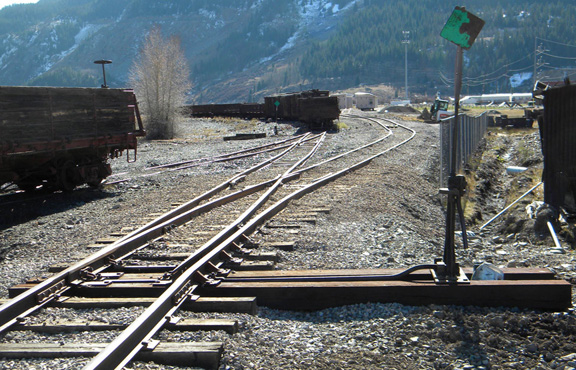
Looking south at the two switches for the Shenandoah connection, now complete with switch stands and all track.
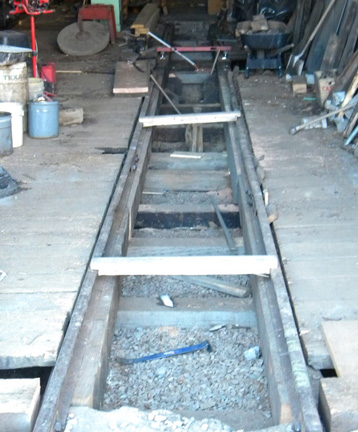
October 30, 2010. The right pit is constructed both structurally lighter and shallower than the engine pit. It was built to handle railcars rather than locomotives. The two rows of 8×10-in beams set on top of cross ties, most of which were missing or too rotted to use. We added concrete pads under them to better protect them. The pit was dug deeper than original and backfilled with ballast for better drainage. Later, floor planks were laid crossways in the pit. The pit was about half finished and was completed a short time later. Then the SN caboose was brought inside for restoration.
2011 – SN track project finished
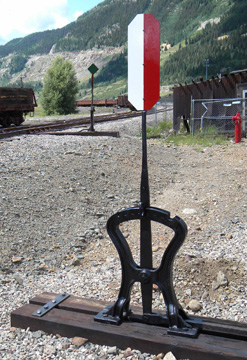
July 29, 2011. The switch stand installation is complete. The ties were leveled. The repaired switch stand base was mounted with bolts extending below the ties and embedded in concrete. Straps were added to both ends of the two ties to hold them in relative position. The switch stand was painted, and a new flag (aka target) was painted in historical red and white.
Photos of Finished Project Photos – August 28, 2012
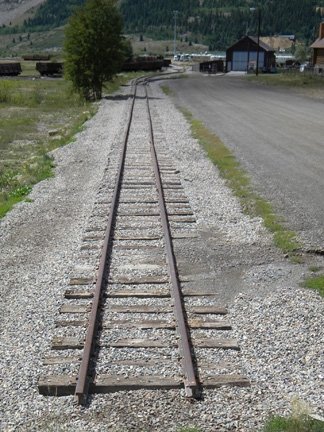
Looking south along the main line from the north end of the track at 10th Street. The track is along side Cement Street and displace a few feet to the right of where the original track would have been before the street existed. At the corner of 9th Street and Cement Street (upper center of photo) we found remnants of old ties at the same elevation as the track we built – a testament to ability of the surveyor in laying out the route as close to the original as practical. It was not possible to lay the track exactly down the street because it is built up above the original ground and its grade is not level enough.
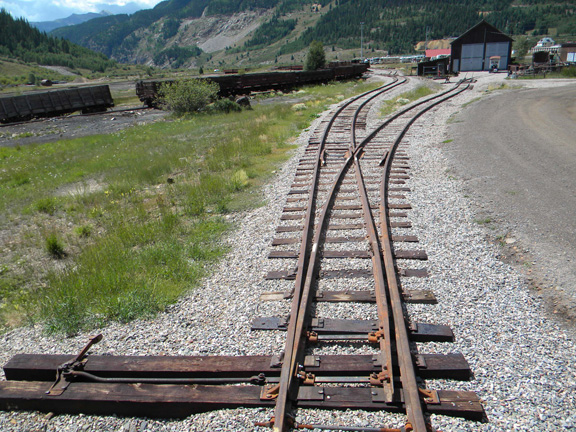
With the ground throw in the foreground, looking south along the main line to the left and the spur to the engine house at right. A ground throw was necessary because of the great snow load pushed to the side of the street and over the tracks in winter, which would wreck a stand. At right Cement Street curves into 9th Street.
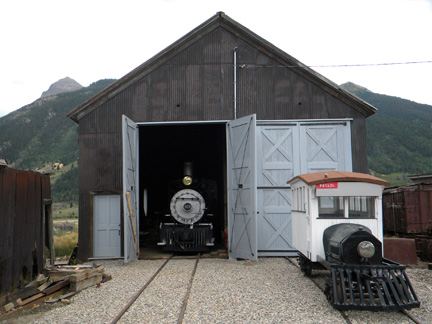
The 315 and Casey Jones at the engine house.
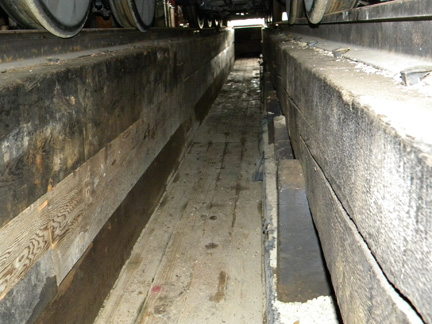
The 30-ft deep engine pit with three layers of heavy beams on either side and a floor of boards (well appreciated by engine maintenance volunteers). The view is from beneath the center of the 315 tender looking towards the door. The pit is about 52 feet long.
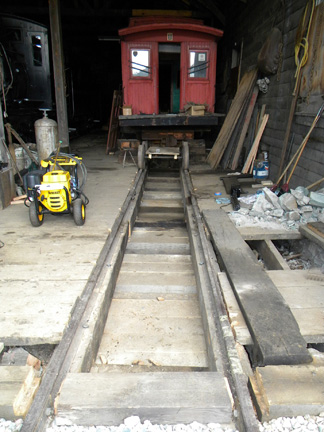
The shallow car pit viewed from the doorway. It has only one layer of heavy beams that are set on smaller cross members, with planks between them to form a floor.
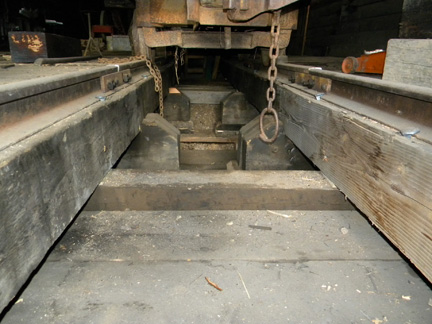
In the middle of the car pit is the deeper section with removable beams, used as a place to remove or install wheel sets and trucks.
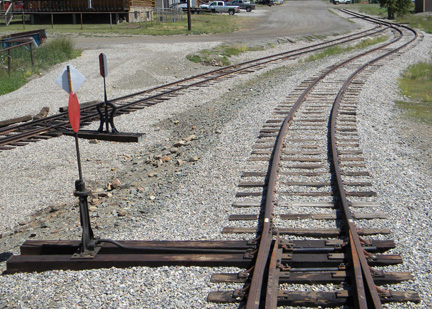
With the main switch stand in the foreground, looking north to the connection with the spur to the engine house and to the end of the track at 10th Street. Not really visible in this photo is the ground throw switch for the spur at the upper right. The harp stand for the stub switch for the two tracks into the engine house is at the left. In repairing the square flag (target) at the top of the main switch, we found white paint under the green, so we painted it white, the historical color.
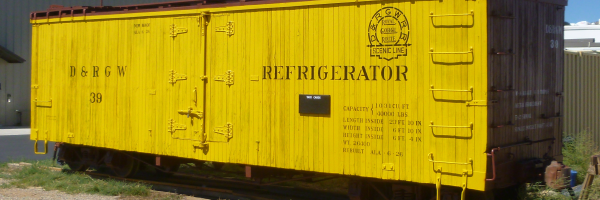
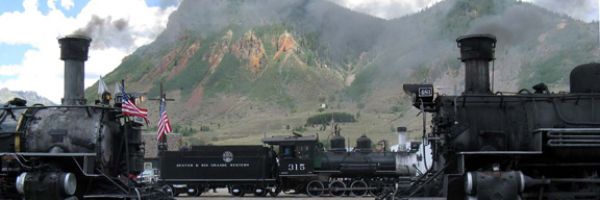
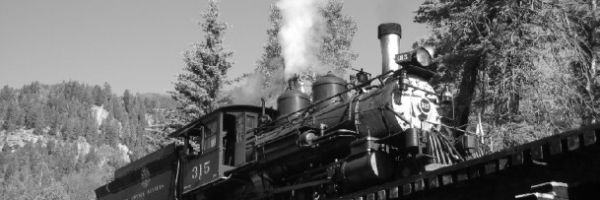
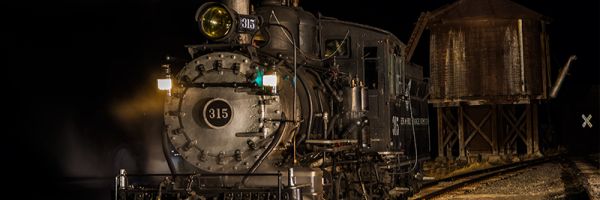
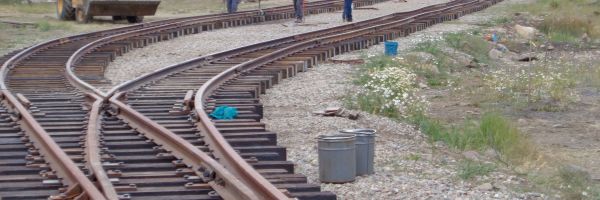
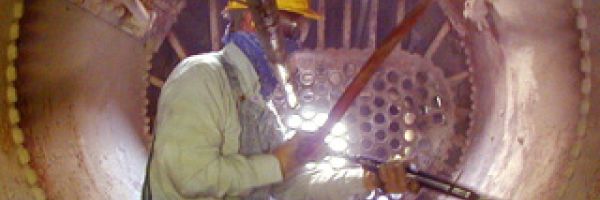
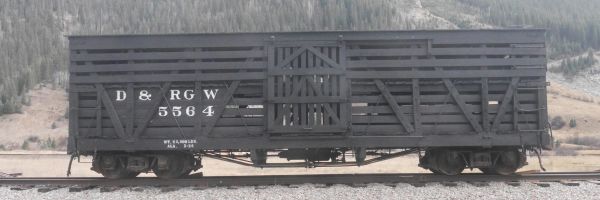
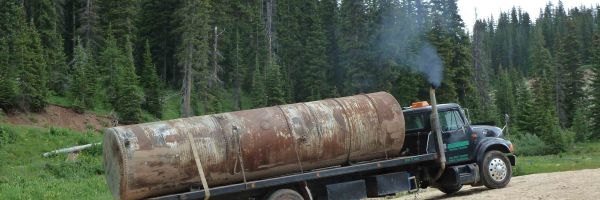
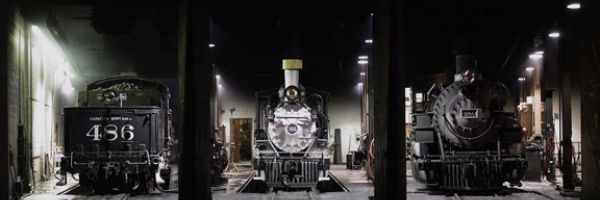
D&RGW Freight Cars
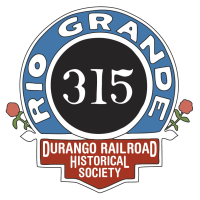
Durango Railroad Historical Society is comprised of a dedicated group of individuals who are united by their interest in narrow gauge railroading and focus on the preservation of southwest Colorado’s railroad history.
The Durango Railroad Historical Society is a non-profit corporation in Colorado and is a public charity under section 501(c)(3) of the Internal Revenue Code.
![315_uncovered_eng_house-web[1]](/wp-content/uploads/315_uncovered_eng_house-web1.jpg)